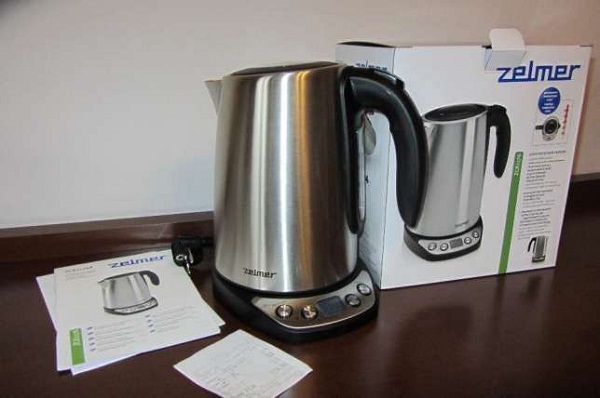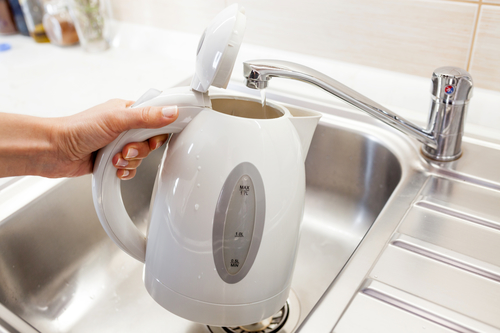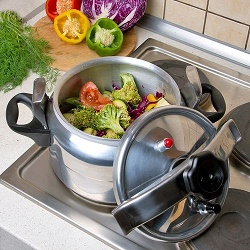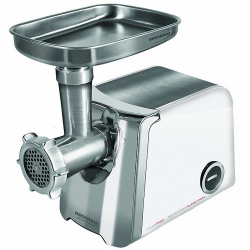How to remove the smell of plastic from the kettle using improvised means
The new kettle smells like plastic - a common occurrence for newly acquired household appliances. As the great experience of users shows, it is easy to get rid of the unpleasant amber; it suffices to recall all the practical wisdom of home use. An obsessive or subtle scent appears due to various chemical additives, which are part of the plastic. The more expensive the product, the better the technical components, the less they emit their specific flavor. There are several ways to quickly and effectively get rid of the smell of plastic in your kettle.

Content
Lemon shine
This is perhaps the oldest and most popular life hacking, and here the lemon is used in all forms. The cheapest option is to use the usual one. citric acid, for a teapot with a standard volume, one or two packets is enough. The process does not involve difficulties: pour water to the maximum mark, pour out citric acid and boil. Leave the kettle with lemon water for 12-14 hours, re-boil and rinse well with running water.
An alternative is to use juice or rind of three to four lemons. The algorithm of actions will be the same: boil, insist and boil again. It is better to pour water through the spout, so the filter and the outer surface of the plastic will be cleaned.
Important! It happens that a solution of citric acid corrodes the details in the joints. Indeed, it is a sad fact, but it only happens with poor quality equipment. Good plastic will not deteriorate under the influence of a solution of lemon, even with regular boiling.
The acids contained in the lemon will clean the inner surface of the kettle, bring the metal parts to shine. The advantage of the method is its absolute environmental friendlinessBecause lemon does not contain any kind of chemicals, it does not leave any smell or bloom.
How to use bay leaf
If there is no citric acid or fruit on hand, then bay leaf is present in almost any kitchen. The leaves of laurel also do not contain chemical compounds and add to the list of environmentally friendly ways to combat the unpleasant smell of plastic in the kettle.
Unlike lemon, laurel quickly gets rid of the aroma of plastic and dyes. Half a sachet of dried leaves is poured into the kettle, poured with water and brought to a boil, then allowed to infuse for an hour and a half. After boiling again, drain the water and wash the kettle.
Here it is important to check if there are any pieces of leaves left in the kettle or filter. Even small branches will transmit the spicy smell of laurel tea or coffee. It will not be superfluous to ventilate the device after washing.

Soda solution and smell vinegar
Baking soda is a versatile household cleaner, and quite safe. The use of the usual powder is quite extensive: cleaning dishes, plumbing, ashtrays from the smell of tobacco. Soda is also useful in combating the aroma of the “new teapot”. Water, as in the previous cases, you need to dial to the maximum mark. Pour 3 - 4 large spoons of soda, mix well to dissolve the powder.Bring to a boil once, infuse for a couple of hours and boil again.
Baking soda is an alkali, as it is known, it perfectly neutralizes acidity, therefore, eliminates various specific odors.
In the absence of soda, vinegar will come along with vinegar essence. In a kettle with water, pour 150 ml of 9% vinegar and two tablespoons of acetic acid 70%. Turn the kettle on and off, not letting the liquid boil. After simple handling, rinse the container thoroughly.

Carbonated drinks
Sprite is a highly carbonated lemon based drink. No matter how funny, but he can really remove the obsessive smells of plastic from the new kettle. The list of suitable soda also applies Coca-Cola.
Unlike previous methods, here you need to fill sparkling water instead of usual water and boil it several times in a row, letting the drink cool slightly. Next, rinse the container well under running water. In addition to the absence of any odors, the kettle will be well cleaned from any technical liquids, for example, from oil residues.
The principle of operation is simple: the composition of these drinks includes a component such as phosphoric acid (E338). Due to this, it perfectly cleans the entire inner surface of the kettle, simultaneously eliminating all odors.

Why the new technology smells like plastic
After reviewing the most useful methods on how to remove the smell from the kettle, you can refer to the origins of the problem and find out what it comes from. In fact, plastic does not smell, but different dyes and plasticizers, which are plenty in the composition of the plastic, are capable of producing intrusive technical aromas. According to the instructions, the user must boil ordinary water in the kettle at least three times to remove odor, oil or other liquids.
The nature of technical amber can be different.
- When home appliances do not just exude a smell, but frankly "stinks" - this is a bad sign, it is likely that in the production they were used low quality components. If the aroma has not disappeared after three boiling and any special methods, then this indicates an excessive content of plasticizer. This purchase does not contain any benefit, the smell will not disappear, and will be transferred to drinks, which means that chemical elements will enter the body, which should be avoided.
- Leftovers process oil can also produce an unpleasant smell, but they are quickly and easily washed off with ordinary hot water.
- The smell of dyes and other chemical components in a tightly packed kettle. They are not harmful to health and quickly begin to erode, three-time boiling will completely remove the remnants of a specific flavor.
If the new electric kettle has already been purchased, and there is a pronounced smell of plastic in it - try to get rid of the aroma before you start drinking tea. Drinks that smell like chemicals are hardly fun. As a rule, simple manipulations solve the problem quickly and permanently. What to do with the product, if technical odors are not eliminated - it's up to the user: you can return goods to the store or use it for technical purposes.

/rating_on.png)
/rating_half.png)
/rating_off.png)











